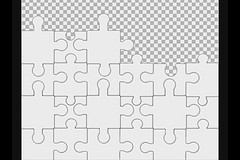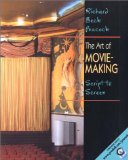The Art of Kendo
The Art of Kendo
Kendo, a form of martial arts, has a lot of different movements which during execution are greatly given emphasis. The movements involved may seem easy because one can easily learn the right footwork, the right swing and the right posture. The concept of this martial art is based on reflex. The difference is that shinai, which is a form of weapon, is used as an extension of the practictioners body. For one to be able to master this, he has to practice performing these actions a thousand times over.
Kendo is a Japanese style of fencing derived during the Meiji period in Japan (1868-1912), from the two-handed sword fighting techniques of the samurai. Today kendo, which means “way of the sword”, is practiced with shinai (bamboo swords), and fighters wear protective equipment covering the target areas: the head, wrists, and abdomen. The bogu (protective gear) consists of a men (face mask), a do (breastplate), kote (fencing gloves), and the tare, a kind of apron to protect the stomach and hips.
Under the protective gear, kendoka (students of kendo) wear a hakama, or wide split skirt, reaching the ankles. Their uniform is the embodiment of the Samurai spirit and can be paralleled with the European knights who wear metal armors. The weapon used in Kendo is the shinai, or bamboo sword. The shinai is approximately four feet in length and is made of four carefully formed bamboo slats bound together to form hollow cylinder. A cord runs along the length of the shinai. To make a valid cut a player must strike his opponent with the side opposite the cord. In addition the point must be struck with the top third of the shinai. The concept of Kendo is to discipline the human character through the application of the principles of the Katana.
Nowadays, there are Kendo dojos or schools all over the world.
You would think that with this set-up, this martial art would become Westernized or tainted with impurities. That is not the case, however. The technical level of the martial art has remained excellent regardless of where a dojo is located. There is a worldwide uniformity of the basics of the art. Whether it’s in America or whether it’s in Europe, the fundamentals being taught are the same. It is only in the advanced training wherein the differences in certain schools become evident. But such disparity is not vital to the elements of the martial art. The 1970s paved the way for international competitions to become more available to Kendo followers. Nowadays, there are more than fifty countries in the international competition circuit.
With Kendo, one can learn discipline, good manners, etiquette and patience which are very important virtues that we can apply in our daily lives. Though these values can be learned from other martial arts form, there is a value that you can only learn from Kendo – once you attack, you keep constant pressure by striking the opponent nonstop. In our lives, we apply this by “striking while the iron is hot”.
Are you looking for Kendo equipment? You’ve got quite a range of martial arts supplies in the market to choose from, whether you want one of those martial arts uniforms or instructional materials. Explore the Internet now.
Guy Kawasaki presents The Art of the Start at TiECon, May 13, 2006.” Garage Ventures & TiECon 2006
Video Rating: 4 / 5
Question by Dinky Willard: So… over the ages, the art of movie-making has ‘improved?’ Do you agree or disagree?
With the type of graphics used to make monsters and special effects,which are your favorite? There is the old really way (dress as godzilla, stomp around- or have no special effects at all) The old way (original star wars (unedited), jaws, the dark crystal… the use of puppets, mechanics, and latex masks), the new age terror animation (that poorer quality 3d special effects like in spy kids 3, starwars I… ugh), the newer special effects (transformers, starwars III, Narnia, Harry Potter) The Newest special effects (Avatar… etc)
Why is it that my favorite stage is that mechanical puppet era? It seems it might just be my nostalgia, and that so many awesome movies came out of that long period… They just seem more tangible in my mind… the special effects in these newer movies… makes everything so blatent and fluid- I just can’t see the realism. It looks more fake than puppets, and that level of ‘mystery’ seems to disappear completely.
What do you think? I’d like to get some kids views on this… like.. under 14.
Best answer:
Answer by B!g Kid
For all its supposed ‘realism’ CGI still often looks very flat. Add to that, much of what is depicted you know to be so preposterous, that at times, you aren’t willing to suspend disbelief any longer.
My favourite style of CGI is when you don’t even realise it has been used, such as removing modem conveniences in a period piece. Still, I was very impressed with the ‘fur’ in King Kong, how realistic it appeared, and how it followed the behaviour of real hair – e.g. when getting wet.
Know better? Leave your own answer in the comments!
The Art of Industry: The Making and Meaning of Edward Burtynsky's …
The Art of Industry: The Making and Meaning of Edward Burtynsky's New …. But when it gets down to making the film — to the logic of the film — I think all our …
Read more on The Atlantic
The Art of Movie Making: Script to Screen
This comprehensive book explores the ways in which the frequently conflicting but constant elements of art, technology, and business come together to shape “the movies.” A presentation of how the moviemaking process works gives readers an appreciation of the informed and skillful choices that artists and technicians make in creating their art. Chapter topics look at the screenwriter, the director, the art of technique, the cinematographer, casting the performers, sound design, and marketing
List Price: $ 92.80
Price: $ 90.00
www.ted.com Artist Theo Jansen demonstrates the amazingly lifelike kinetic sculptures he builds from plastic tubes and lemonade bottles. His creatures are designed to move — and even survive — on their own.TEDTalks is a daily video podcast of the best talks and performances from the TED Conference, where the world’s leading thinkers and doers give the talk of their lives in 18 minutes. TED stands for Technology, Entertainment, Design, and TEDTalks cover these topics as well as science, business, development and the arts. Closed captions and translated subtitles in a variety of languages are now available on TED.com, at http Follow us on Twitter www.twitter.com Checkout our Facebook page for TED exclusives www.facebook.com
Video Rating: 4 / 5



